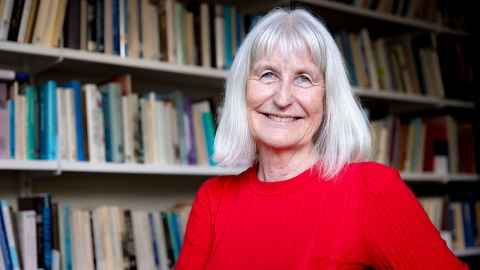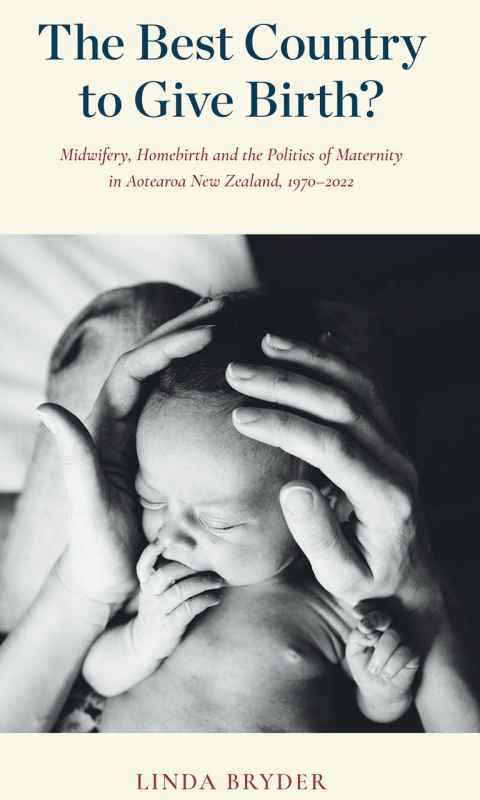Linda Bryder's latest book a labour of love
30 November 2023
Curiosity about what sparked the momentous change in New Zealand’s maternity care from 1990, and its consequences for mothers and babies, is behind historian Linda Bryder’s new book.

As a professor in the History Department in the Faculty of Arts, Linda Bryder's career has focused on the history of health and medicine.
“Since working on the history of Plunket some 20 years ago, I’ve developed an interest in the history of reproductive health, which is perhaps more contested than many other areas of history," she says.
Her book, The Best Country to Give Birth? Midwifery, Homebirth and the Politics of Maternity in Aotearoa New Zealand, 1970-2022 (AUP), is a major, meticulously detailed account spanning more than five decades.
“My original plan was simply to write an academic article on the 1990 Nurses Amendment Act, which ‘emancipated’ midwives. To me, this seemed an odd concept to apply to a health profession. The New Zealand College of Midwives, which had been set up just before the Act, also called their 30th anniversary celebration of the 1990 legislation ‘Emancipating Midwifery’.”
The 1990 Act, which followed intensive lobbying by home-birth midwives, allowed midwives to practise alone in the community without any medical involvement. Previously, from 1971, New Zealand had followed the Dutch model of home birth, requiring a doctor to assess as low risk any woman wanting a home birth, and to be available in the event of emergency.
Bryder says the 1990 Act abolished that requirement and also allowed for experimental direct-entry midwifery training programmes – no prior nurse training required – to be set up, leading the College of Midwives to celebrate the Act as ‘liberating’ midwives from medical and nursing ‘bondage’.
“The College persuaded the government that women wanted home birth but, as it turned out, most of them didn’t. While home birth never exceeded about three percent, another 12 percent of births occurred in midwifery-run primary birthing units, which were set up from the 1990s with no on-site medical involvement.
“Also in the 1990s, the centrality of independent midwives in New Zealand’s maternity services was cemented by funding changes (the Lead Maternity Carer system) which progressively excluded GPs from maternity care.”
She says throughout the nineties, the College of Midwives developed what it called the ‘New Zealand model of midwifery’ which was opposed to the ‘medical model’.
The College of Midwives persuaded the government that women wanted home birth ... most of them didn’t.
“It focused on the natural, allied to alternative or complementary medicines, and steadfastly rejected any suggestion of a hospital internship for graduating midwives, which it considered ‘counter-productive’ as it would undermine their role as guardians of natural birth.”
The 1990s saw deep rifts appear between the College and some doctors, hospital midwives and consumers. This didn’t improve once midwifery got its own Midwifery Council in 2004, which, as the College said at the time, “removed the final barrier to full professional autonomy for midwives” and allowed them to manage their own house.
“If anything, the rifts deepened,” she says. “Disturbing results were reported by coroners, and health and disability commissioners who dealt with consumer complaints from 1996, and which were then quantified from 2007 in data collected by the Perinatal and Maternal Mortality Review Committee (PMMRC).”
This committee found that around one-third of maternal deaths annually and 20 percent of perinatal deaths, within 28 days of birth, were, in their words, “preventable”, and often a result of provider shortcomings. This included failure to refer to a specialist in a timely manner or to recognise emergency situations.
Bryder also found mounting evidence that certain groups were disadvantaged, including Māori, Pacific and Indian mothers and babies, who were less likely to access interventions but showed the greatest need; this was reflected in poor outcomes charted by the PMMRC.
Apart from this committee, Linda says there was little academic research into the outcomes of the new services until the 2010s, when two academic studies, critical of the system, were published in international journals. Both were vehemently contested by the College of Midwives, who insisted that New Zealand’s system was world-class and a model for other countries.
“What happened in 1990, cemented by a new funding system in 1996, has shaped maternity services to the present day, and my book is essentially telling that story as a political and social history; investigating policy changes and their impact on society,” she says.
While the book is naturally of interest to health professionals, Linda believes it has a wider audience. “It’s also for parents from that era, all of whom will have their own stories about this most important of life events.”
As for the answer to whether New Zealand is, in fact, the best country to give birth, she says readers must decide that for themselves.
“But one thing I think this history shows is that midwives and other health professionals need to work as a team for the benefit of mothers and babies. I’m not the first to be saying it, but I’m the first to chart it historically in a book-length study.”
Story by Julianne Evans

The story first appeared in the December 2023 edition of UniNews.
Listen to an interview with Linda Bryder on RNZ from Saturday Morning, 2 December 2023.